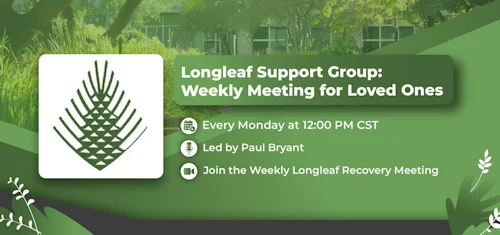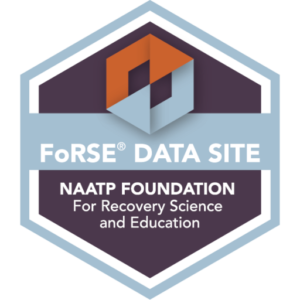Maybe you’ve decided tonight is the last time you’ll drink, or someone you love just announced they’re quitting alcohol on their own starting tomorrow. Before anyone takes that step, there’s something critical to know: stopping alcohol suddenly can be dangerous—sometimes even deadly.
This article explains why quitting cold turkey carries serious risks, what withdrawal symptoms look like, and how to stop drinking safely with medical support.
What is the difference between a stimulant and a depressant
You’ve probably heard people describe alcohol as a depressant, but then you’ve also felt that burst of energy and confidence after your first drink. So which is it? To answer that question, we first have to understand what stimulants and depressants actually do to your body.
Stimulants speed up your central nervous system. They make your brain work faster, your heart beat quicker, and your body feel more alert. Think of caffeine or medications used to treat ADHD—they increase activity in your brain and body.
Depressants do the opposite. They slow down your central nervous system, reducing brain activity and making everything work at a slower pace. This creates feelings of relaxation, drowsiness, or sedation.
Here’s where it gets interesting: alcohol is officially classified as a depressant, but it produces both types of effects depending on how much you drink and when you measure its impact. Let’s break down why.
Why is alcohol both a stimulant and a depressant
Alcohol affects multiple chemical systems in your brain at the same time, which is why it can feel energizing at first and sedating later. Scientists call this a “biphasic response”—meaning two phases of effects.
When you take your first few sips, alcohol triggers your brain to release dopamine. Dopamine is a chemical messenger that creates feelings of pleasure and reward. This dopamine surge is what gives you that initial buzz—the feeling of being more social, confident, and energetic.
At the same time, alcohol is also enhancing the activity of another brain chemical called GABA (gamma-aminobutyric acid). GABA slows down brain activity, acting like a brake pedal on your nervous system. During the first drink or two, the dopamine effects feel stronger than the GABA effects. But as you keep drinking, GABA takes over and the depressant properties dominate.
The dopamine release happens quickly—often within minutes of your first drink. This chemical surge in your brain’s reward center creates what most people recognize as the “good” part of drinking.
You might notice several changes during this phase:
- Increased chattiness: Conversations flow easier and you feel more comfortable talking to people
- Reduced self-consciousness: Worries about what others think seem to fade away
- Temporary mood lift: Stress and anxiety take a backseat to feelings of optimism
- False alertness: You might feel more awake or energetic, even though alcohol is already slowing your reflexes
The dopamine response explains why drinking can feel rewarding. It’s also one reason why some people develop problematic drinking patterns—they’re chasing that initial pleasant feeling.
While dopamine creates that energized feeling, GABA is working in the background to slow everything down. GABA is your brain’s main “off switch”—it reduces activity in your neurons and makes communication between brain cells slower.
As alcohol increases GABA’s effects, you start experiencing the classic signs of intoxication:
- Slurred words: Your mouth and tongue don’t respond as quickly to your brain’s signals
- Clumsy movements: Balance becomes difficult and precise actions require more concentration
- Slower reactions: You respond to sounds and sights with a delay
- Growing drowsiness: Your eyelids feel heavy and you want to sleep
- Fuzzy memory: Forming new memories becomes harder or stops entirely
According to the National Institute on Alcohol Abuse and Alcoholism, GABA’s effects strengthen as your blood alcohol concentration rises. Eventually, the depressant properties overpower the stimulant effects every single time.
What causes the shift from stimulant to depressant
The change from feeling energized to feeling sedated depends on your blood alcohol concentration, or BAC. BAC measures how much alcohol is in your bloodstream as a percentage.
Research shows that stimulant effects are strongest when your BAC is climbing. Depressant effects take over when your BAC peaks and starts falling. However, the depressant effects actually get stronger even while your BAC is still rising past a certain point.
| BAC Level | What You Feel | Effect Type |
| 0.01-0.05% | Relaxed, talkative, confident | Stimulant-like |
| 0.06-0.10% | Mixed feelings, starting to feel clumsy | Transition |
| 0.11-0.15% | Noticeably drunk, poor balance, sleepy | Depressant |
| 0.16%+ | Very sedated, blackouts possible, dangerous | Strong depressant |
Several factors affect when this shift happens for you. Your weight, biological sex, genetics, whether you’ve eaten, and how fast you’re drinking all change how quickly alcohol builds up in your blood. Someone who drinks three beers in an hour on an empty stomach will hit the depressant phase much faster than someone who drinks the same amount over three hours with food.
Here’s something important: you can’t bring back the stimulant effects by drinking more. Once the depressant phase kicks in, more alcohol only makes you more sedated—it won’t recreate that initial buzz.
Short-term effects of alcohol’s dual nature
The timeline of alcohol’s effects helps explain why the same night of drinking can feel so different at the beginning versus the end. Most people process alcohol at about one standard drink per hour, though this varies. A standard drink means 12 ounces of beer, 5 ounces of wine, or 1.5 ounces of liquor.
The first 20 to 30 minutes after drinking typically bring the most noticeable stimulant-like feelings. Your BAC climbs quickly during this window, especially on an empty stomach.
During this early phase, you might experience:
- Anxiety relief: Social situations suddenly feel manageable instead of stressful
- Easier conversation: Words come more naturally and talking to strangers feels less intimidating
- Temporary energy: A sense of vigor or alertness, despite alcohol actually slowing your system
- Optimism: Problems seem smaller and the future looks brighter
The Centers for Disease Control and Prevention notes that even during this “pleasant” phase, your judgment is already impaired. You’re taking more risks and making poorer decisions, even if you feel more confident.
As your BAC continues climbing, the depressant effects progressively take over. This transition typically starts around 0.06-0.08% BAC, though everyone’s different.
The depressant phase brings increasingly obvious impairments:
- Balance problems: Walking straight takes concentration and you might stumble
- Foggy thinking: Making decisions becomes harder and your thoughts feel slow
- Growing sleepiness: You feel progressively more tired, eventually leading to sleep or passing out
- Mood changes: The initial happiness often shifts to sadness, irritability, or anger
At very high BAC levels above 0.25%, alcohol’s depressant effects can slow your breathing and heart rate to dangerous levels. People can die from alcohol poisoning at this stage.
Long-term impact on health and wellness
Alcohol’s dual nature plays a significant role in how addiction develops. The rewarding stimulant effects encourage you to keep drinking, while the depressant effects create physical dependence over time.
With repeated heavy drinking, your brain chemistry adapts. Your brain produces less dopamine naturally and becomes less sensitive to GABA. These changes mean you need more alcohol to feel the same stimulant effects you once got from just a drink or two. Scientists call this tolerance, and it’s a warning sign of developing alcohol use disorder.
The National Institute on Alcohol Abuse and Alcoholism reports that approximately 14.5 million Americans ages 12 and older had alcohol use disorder in 2019. Long-term heavy drinking damages virtually every organ in your body, raising your risk for liver disease, heart problems, certain cancers, and mental health conditions.mental health conditions.
Chronic drinking also changes how your brain handles stress. When alcohol’s depressant effects wear off, your nervous system rebounds into overdrive. This causes withdrawal symptoms like anxiety, shaking, sweating, and insomnia. These uncomfortable feelings often drive people to drink again just to feel normal—creating a cycle that’s hard to break alone.
At Longleaf Recovery & Wellness, we’ve worked with countless individuals who struggled to understand why they couldn’t stop drinking despite wanting to. The answer often lies in how alcohol rewires brain chemistry. Our evidence-based treatment addresses both the physical dependence and the behavioral patterns that keep the cycle going.
Is alcohol an upper or a downer in small doses
Many people believe one or two drinks act purely as a stimulant, making alcohol seem harmless in moderation. This misconception comes from noticing the euphoria and energy that come with light drinking.
The reality is more complicated. Even at low doses, alcohol produces both stimulant and depressant effects at the same time—you just notice the stimulating feelings more at first. Brain imaging research shows alcohol’s depressant effects on your central nervous system begin immediately, even when you feel energized.
Several factors influence whether alcohol feels more like an upper or downer:
- Amount consumed: Even small amounts slow your reaction time and impair judgment, despite feeling good
- Your body: Genetics, weight, and tolerance affect how intensely you experience each phase
- Where you’re drinking: Social settings and your expectations influence which effects you notice
- How fast you drink: Gulping drinks speeds up the transition to depressant effects
From a scientific standpoint, alcohol is always a depressant. The temporary stimulant-like feelings don’t change its fundamental classification as a central nervous system depressant. This distinction matters because even “a few drinks” impair your ability to drive, make decisions, and react to danger.
When to seek help for alcohol use
Recognizing problematic drinking becomes easier when you understand how alcohol’s effects contribute to dependence. Many people start drinking for the pleasant stimulant feelings, then find themselves drinking more often to avoid the uncomfortable aftermath.
If you’re questioning whether your drinking has become a problem, consider how alcohol’s dual effects might be influencing your relationship with it. Are you drinking more to chase that initial buzz? Do you drink to relieve anxiety or depression that seems worse between drinking episodes?
Your body’s adaptation to alcohol produces specific warning signs:
- Needing more to feel good: The initial euphoria and energy now require more drinks than before
- Drinking to feel normal: You consume alcohol to prevent or relieve shaking, anxiety, or other uncomfortable symptoms
- Early drinking: You drink in the morning to counteract feeling awful from the night before
- Can’t stop at one: You consistently drink more than you planned, even when you tell yourself you won’t
Physical dependence can develop even if you don’t consider yourself a heavy drinker. Your brain chemistry changes with regular exposure to alcohol.
Professional treatment becomes important when alcohol interferes with your daily life. At Longleaf Recovery & Wellness, we help people recognize when casual drinking has crossed into problematic territory.
Consider reaching out if you’re experiencing:
- Work or family problems: Drinking affects your job performance or relationships with loved ones
- Withdrawal symptoms: You feel shaky, anxious, sweaty, or nauseous when you haven’t had alcohol
- Loss of control: You regularly drink more than intended or can’t stop once you start
- Continued use despite harm: You keep drinking even after experiencing health issues, relationship conflicts, or legal trouble
Recovery is possible with the right support. We’ve helped many people understand how alcohol changed their brain chemistry and develop practical strategies for lasting change.
Finding real solutions for lasting change
Alcohol’s classification as both a stimulant and depressant reflects how it affects multiple brain chemical systems simultaneously. The initial dopamine-driven euphoria gives way to GABA-mediated sedation as blood alcohol concentration rises, creating a two-phase response that can feel confusing.
Understanding alcohol’s dual nature explains why drinking feels rewarding at first but leads to impairment and sedation with continued use. It also clarifies how alcohol use disorder develops—the pleasant stimulant effects encourage repeated use, while the depressant effects create physical dependence over time.
At Longleaf Recovery & Wellness, we approach alcohol treatment with this scientific understanding as our foundation. Our evidence-based programs address both aspects of alcohol’s effects, helping clients understand their relationship with alcohol while developing practical recovery strategies. We recognize that overcoming alcohol dependence requires more than willpower—it requires addressing the brain chemistry changes that make quitting difficult without support.
Recovery looks different for everyone, but it starts with taking the first step. Whether you’re concerned about your own drinking or worried about someone you care about, professional guidance can make the difference between struggling alone and finding a path forward.
Frequently asked questions about alcohol’s dual effects
No, wine produces the same stimulant and depressant effects as beer or liquor because all alcoholic drinks contain ethanol, which causes both effects. The type of drink doesn’t change how alcohol affects your brain.
The depressant effects depend on how much ethanol you consume, not what type of drink it comes from. A 12-ounce beer, 5-ounce glass of wine, and 1.5-ounce shot of liquor all contain roughly the same amount of alcohol and produce the same effects at the same BAC level.
No, tequila contains the same type of alcohol (ethanol) as all other alcoholic drinks and produces identical effects. Any perceived differences likely come from drinking context, how fast you’re drinking, or what you expect to feel rather than the beverage itself.
Historically, doctors used alcohol as a sedative and antiseptic, but modern medicine has developed safer and more effective alternatives. Today, alcohol has no approved medical use as either a stimulant or depressant.
The initial rewarding stimulant effects (dopamine release and euphoria) encourage repeated drinking, while the later depressant effects and subsequent withdrawal create physical dependence. People drink to feel good initially, then continue drinking to avoid feeling bad—a cycle that reinforces addictive behavior.
Get help at Longleaf Recovery & Wellness
If you’re struggling with alcohol use or concerned about someone you love, Longleaf Recovery & Wellness offers comprehensive, personalized treatment in Alabama. Our team understands the complex brain chemistry changes that make alcohol dependence challenging to overcome alone. We’re committed to providing evidence-based care that addresses both the physical and psychological aspects of recovery. We treat the whole person, not just the addiction, with programs designed to support lasting change and personal growth. Verify your insurance coverage today to learn how we can help you or your loved one begin the journey toward recovery.
- National Institute on Alcohol Abuse and Alcoholism. (2021). Alcohol’s Effects on Health. https://www.niaaa.nih.gov/alcohols-effects-health
- National Institute on Drug Abuse. (2022). Understanding Drug Use and Addiction DrugFacts. https://nida.nih.gov/publications/drugfacts/understanding-drug-use-addiction
- Centers for Disease Control and Prevention. (2022). Alcohol Use and Your Health. https://www.cdc.gov/alcohol/fact-sheets/alcohol-use.htm
- Hendler, R. A., Ramchandani, V. A., Gilman, J., & Hommer, D. W. (2013). Stimulant and Sedative Effects of Alcohol. https://www.ncbi.nlm.nih.gov/pmc/articles/PMC3860472/
- National Institute on Alcohol Abuse and Alcoholism. (2023). Alcohol Use Disorder: A Comparison Between DSM-IV and DSM-5. https://www.niaaa.nih.gov/publications/brochures-and-fact-sheets/alcohol-use-disorder-comparison-between-dsm






